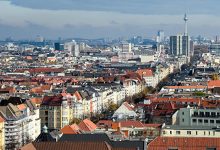Algeria, the largest country in Africa and the 10th largest in the world, exhibits a complex demographic distribution influenced by various geographical, historical, and socio-economic factors. Understanding the distribution of its population offers insight into the country’s social and economic dynamics.
Geographic Distribution
Algeria’s population distribution is markedly uneven, heavily influenced by its geographical and climatic conditions. The majority of the population is concentrated in the northern part of the country, particularly along the Mediterranean coast. This region, known for its milder climate and fertile land, is more conducive to human settlement compared to the vast Sahara Desert, which covers more than 80% of Algeria’s land area.
Northern Region
The northern region, encompassing the Tell Atlas and the coastal plains, is home to about 90% of the country’s population. The Tell Atlas is characterized by its fertile plains, such as the Mitidja Plain, and the coastal regions benefit from a Mediterranean climate with mild, wet winters and hot, dry summers. Major cities in this region include Algiers, the capital and largest city, Oran, and Constantine. These urban centers are economic hubs, offering better infrastructure, education, and healthcare facilities, which attract people from rural areas and contribute to the population density in these regions.
Southern Region
In contrast, the southern region, which comprises the vast expanse of the Sahara Desert, is sparsely populated. The harsh climatic conditions and limited water resources make it less hospitable for large-scale human settlement. The population here primarily resides in oases and a few urban centers such as Tamanrasset and Ouargla. These areas are characterized by their reliance on traditional lifestyles adapted to the desert environment, with many communities engaged in activities like pastoralism and subsistence agriculture.
Urban vs. Rural Population
Algeria’s demographic distribution is also marked by a significant urban-rural divide. The urban population has been growing steadily due to migration from rural areas in search of better economic opportunities. Urbanization in Algeria has led to the expansion of cities and the development of urban infrastructure, but it has also posed challenges such as overcrowding, inadequate housing, and pressure on public services.
Urban areas, particularly Algiers, Oran, and Constantine, offer diverse economic opportunities, including industries, commerce, and services. As a result, these cities attract a substantial portion of the population, contributing to their high population densities. Conversely, rural areas face depopulation issues as younger generations migrate to cities, leading to an aging rural population and challenges in sustaining agricultural activities and rural development.
Population Density and Growth
The population density in Algeria reflects the uneven distribution of its population. Northern Algeria, with its relatively hospitable climate and better infrastructure, has a high population density compared to the sparsely populated southern region. The growth rate of the population has varied over the years, influenced by factors such as birth rates, migration, and socio-economic conditions.
Algeria has experienced significant population growth in recent decades, driven by a relatively high birth rate. This growth has put pressure on resources and services, necessitating investments in infrastructure, education, and healthcare to accommodate the increasing population. The government has undertaken various initiatives to address these challenges, including efforts to promote balanced regional development and improve living conditions in both urban and rural areas.
Socio-Economic Factors
Several socio-economic factors influence the distribution and movement of Algeria’s population. Economic opportunities, quality of life, and access to services are crucial determinants of population distribution. The disparity between the more developed northern regions and the less accessible southern regions impacts migration patterns and economic development.
Economic development programs and government policies aim to address regional imbalances by promoting industrialization and infrastructure development in less populated areas. Additionally, initiatives to improve agricultural productivity and support rural development are essential for stabilizing population distribution and supporting sustainable growth.
Historical and Cultural Influences
Historical and cultural factors also play a role in the population distribution in Algeria. The historical legacy of colonization, migration patterns, and traditional lifestyles contribute to the current demographic landscape. For example, historical trade routes and cultural exchanges have historically influenced settlement patterns along the Mediterranean coast and in oases within the Sahara.
Cultural practices and traditional lifestyles continue to influence the demographic distribution, particularly in rural and remote areas. These factors shape the way communities interact with their environment and contribute to the unique demographic characteristics of different regions.
Future Trends
Looking ahead, Algeria faces several challenges and opportunities related to its population distribution. Urbanization trends are expected to continue, with more people moving to cities in search of economic opportunities and improved living conditions. This trend may exacerbate existing challenges related to urban infrastructure and service delivery.
To address these issues, strategic planning and investment in both urban and rural development are crucial. Policies that promote regional development, support sustainable agriculture, and improve infrastructure can help balance population distribution and enhance overall socio-economic stability.
In conclusion, the distribution of Algeria’s population is shaped by a combination of geographical, climatic, socio-economic, and historical factors. The concentration of the population in the northern regions, the urban-rural divide, and the challenges and opportunities associated with demographic trends reflect the complex dynamics of the country’s population distribution. Understanding these factors is essential for addressing the country’s development needs and fostering balanced growth across its diverse regions.




